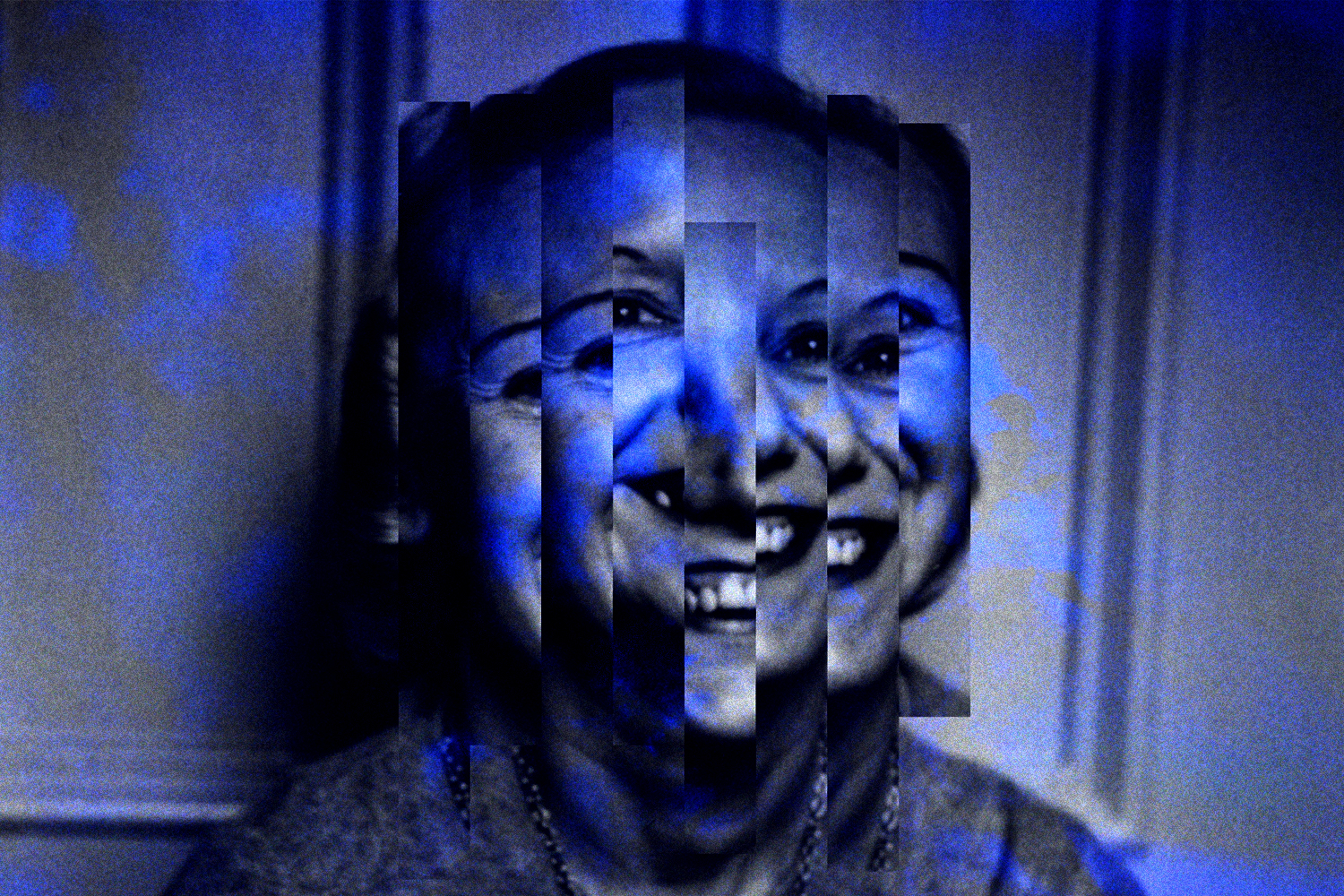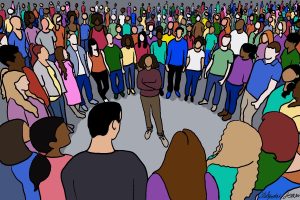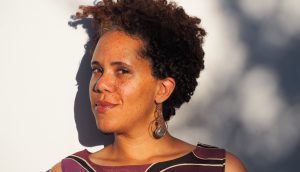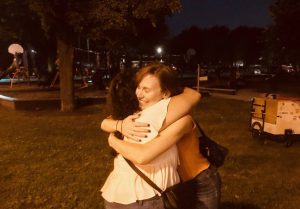“I had a curious feeling that I was living on several planes simultaneously; the overlapping of these planes was confusing.”
Anna Kavan, Ice
Sloane is a skinny boy who’s over prescribed Vyvanse. Sloane has long, curly brown hair, stubble, and a collection of white t-shirts on which she has painted band names. She holds a cigarette from a pack her brother bought her and the keys to a 2004 Dodge Intrepid in her right hand. She has bad eyesight. Sloane is starting to suspect that something is wrong with this image.
Sloane is standing outside a wrecked powder blue 2004 Dodge Intrepid. The front of the car is folded in because she ran it full speed into a friend’s car. She is 19 or 20 years old. She has a patchy beard and the bar she snuck into never carded her. She has resolved to never speak about what she suspects is wrong. Instead she gobbles any pill and drink she can find until she pukes. She does this at house parties. She wanders outside and pukes on the grass, alone. She thinks she has hacked the system, that she is the best damn puker on this side of the Mississippi.
Sloane is standing in a bookstore 310 miles from where she crashed her powder blue 2004 Dodge Intrepid. She is a tall girl with broad shoulders and an exposed midriff. She has finally started wearing glasses. She finds a collection of short stories on the shelf, something about a girl and a bazooka.
I first encountered the author Anna Kavan while I was blowing up my life. Helen Ferguson encountered her pseudonym in the same manner. For me, that involved wandering around Chicago with a fresh orange haircut and an estrogen script. For Helen, it involved a suicide attempt, a failed marriage, and a Swiss mental institution. Helen also got a new hairdo, a chic blonde bob. Hers worked out a lot better than mine did.
I couldn’t have less in common with Anna. She was a wartime British ciswoman and heroin addict who traveled across the globe and raced cars. I’m a butch trans woman who spent most of my life in Missouri and I haven’t driven in at least three years. However, her fiction and her life spoke to me like a note on a post, nailed in place during WWII and read during a global pandemic. She said I wasn’t quite alone, out here between the planes.
Anna’s fiction withholds context and detail. Her science fiction novel, Ice, is written without a single stylistic element of sci-fi world-building. Anna only includes one fact about this world. That the Ice is coming, slowly spreading, taking over their world. Her writing possesses an ever encroaching sense of terror. The violent feeling that something is wrong and you will never figure it out. That there is Ice slowly growing across the surface of your brain. You are trapped in the mind of her narrators. You watch them stumble around in the dark, trying to find something, anything to hang on to. Helen felt trapped by what the world expected of her, and for a long time before I found her, I did too.
Helen, pre-Anna, was raised with all the advantages of a wealthy, pre-war, British woman. She was educated, she was cultured, and she had her pick of wealthy suitors for a socially accepted marriage. She failed at two of these marriages. I was raised with all of the advantages of being a skinny white boy. I also failed, pretty spectacularly. After I blew everything up, I moved to Chicago and took up with a bunch of transsexuals and bicyclists. After Helen’s transition to Anna, she finally gave up on her failed experiment of 20th century womanhood. She was 37 years old. No one depended on her, nothing was expected of her. She was left to blow up her life with heroin and a group of race car drivers.
Anna wrote of her time with the racing group in the short story, “Julia and the Bazooka.”
“Today she is lapping only a fraction of a second behind the number-one driver when a red hot bit of his clutch flies off and punctures her nearside tyre, and the car somersaults twice and tears through a wall. Julia steps out of the wreck uninjured and walks away holding her handbag with the syringe inside it. She is laughing. Julia always laughs at danger. Nothing can frighten her while she has the syringe.”
Julia’s bazooka was a battered old syringe that she used to inject heroin. Anna and Julia were alike in their habit. The bazooka, the great obliterator, sent Anna a place where she didn’t have to think about her failures as a woman. Anna spent her life running from an inescapable dread. She crafted worlds where characters were followed and swallowed by that dread. I spent most of my teenage years being swallowed by that dread and running towards substances to obliterate it. One day, I walked out of a studio apartment like Anna coming out of her Swiss asylum. I had nothing with me but a new hairdo and a new name. I was ready to face the rest of the world.
Anna lived on the margins. She wrote unmarketable fiction and was praised in secret amongst small groups. Her current appeal is only heightened by the fact that the world forgot about her. I am learning, years after blowing up my life and finding her, how to exist in these margins, outside the spaces where anyone is paying attention. At least there, I have good company. Anna and I, in the confusing space where the planes overlap, laughing at danger.
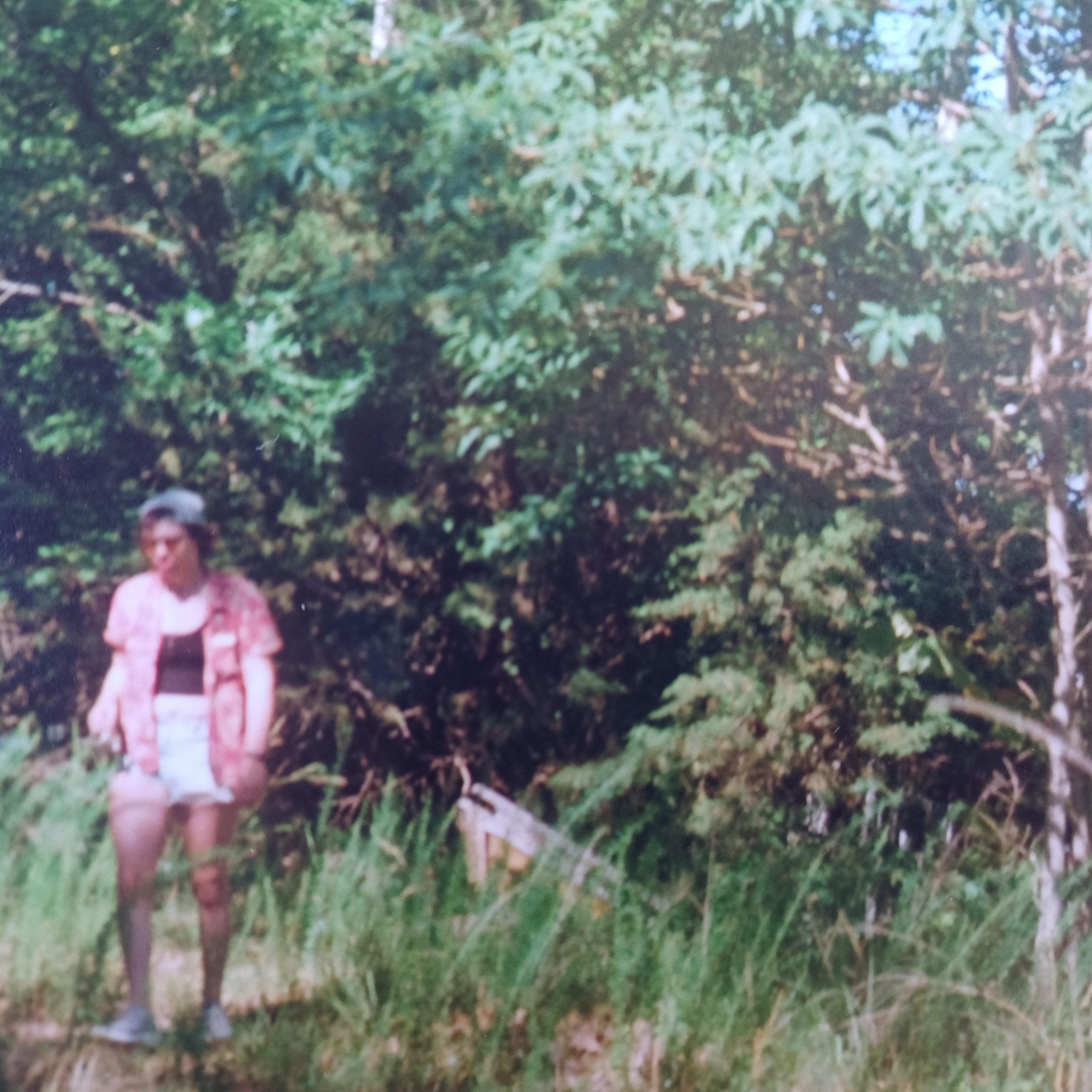
About the Author: Sloane Murphy rides a blue bicycle around Chicago and doesn’t even answer to the name Sloane. Her work focuses on labor, the Midwest, and the lives of butch trans women. She’ll go on a long rant about the IRA if you get a couple of cheap beers in her. Her work has appeared under various names in Frank Magazine and The Spool. You can find Sloane’s independent short fiction at sloanemurphydontexist.itch.io. It’s mostly about cyborg girls.
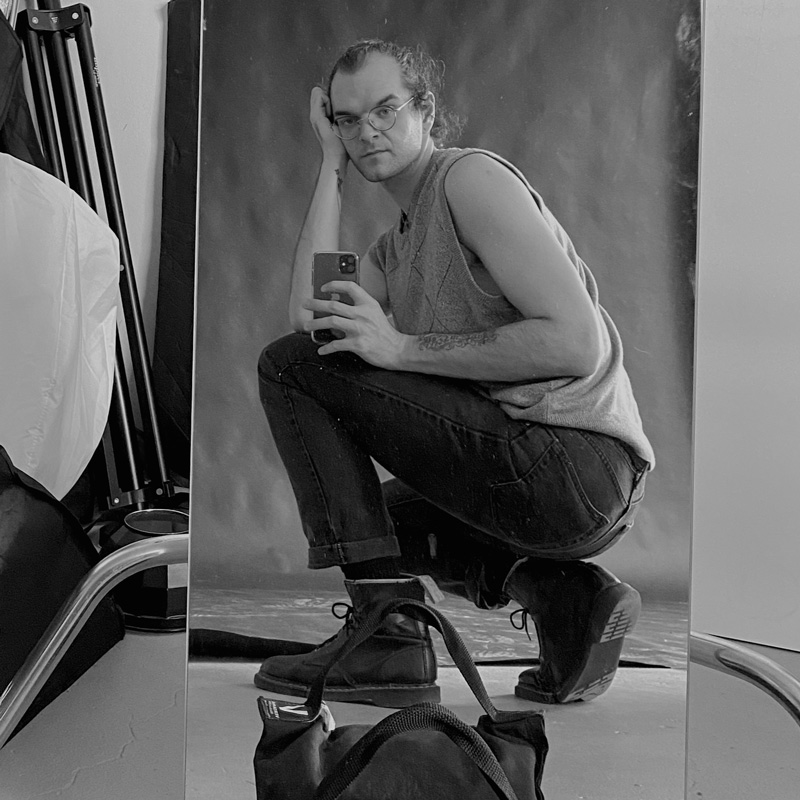
About the Illustrator: Ryan Edmund is a photographer living in Chicago. His practice is rooted in the intimate connection between himself and the subject in an effort to capture the softer, more nuanced sides of their identity.
